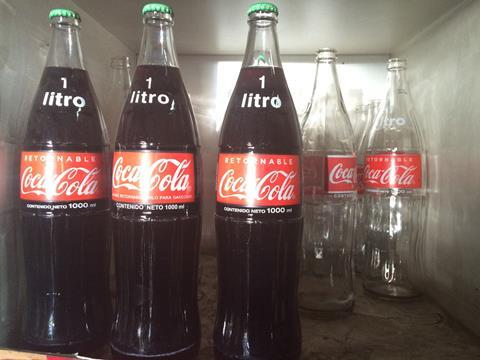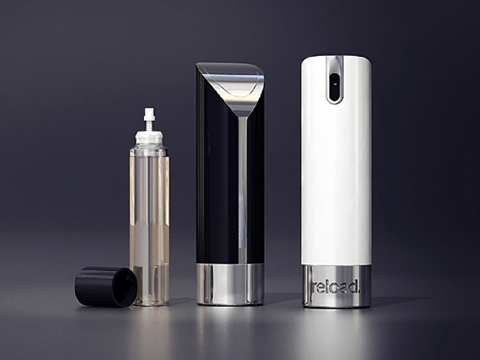Packaging produced by European converters is being washed up on shores and riverbanks all over the world. Brands are being faced with highly visible evidence that although a pack may be ‘recyclable’, it certainly does not mean it is actually recycled. Significant investments and commitments are being made by national and multinational brands as the industry assesses what can be done to redesign packaging to ensure that it really does end up in a recycling stream rather than in our seas – writes Tracy Sutton, consultant in circular economy packaging design and founder of Root.

Plastic-phobia
One traditional approach to designing more responsible packaging would be to explore a material swap to use a material that is ‘widely recycled’. While this can have a positive impact at a national or potentially continental level for some key materials, for a global brand it’s not a ‘one size fits all’ solution.
A material swap approach does not help tend to the current phobia the public is developing about plastic. While I understand some of the reasons behind a ‘plastic free’ supermarket, this material specific campaign does nothing to reduce litter or consumption of single use packaging. ‘Plastic-free’ demonises an incredibly valuable material with the emotion behind it preventing us from getting to the real point – the use of exhaustible vs renewable resources. Finally, a material swap does not prevent littering.

Playing it safe
As it stands, brands, retailers and converters are struggling to come to terms with the idea that we might have to move away from using a high value, finite resource for low value applications. Consequently, we’re doing everything we can to keep manufacturing, packing and selling the same products, using the same factories, supply chain and infrastructure. While I praise all the hard work, commitment and initiatives being implemented on by the industry to design for recycling and increase actual recycling rates, I don’t feel we’re thinking outside of the box.
When was that last time that a serious contender for a new packaging format was launched? Take haircare - we still assume shampoo needs to go in a 200ml single use plastic bottle. We might look at a new shape to get more on a pallet, lightweight it to lower its carbon footprint or use smart technology to mould the bottle in a way that uses less plastic or add PCR. Ultimately, it’s still a 200ml single-use plastic bottle to which consumers attach little value – but being made from a finite material makes it very valuable indeed.
Incremental changes are easier, quicker and cheaper to action than rethinking the way that we get our product to the consumer – we want to still offer the same products to a consumer whose lifestyle and expectations around the environment are changing.
The Design Thinking opportunity
When design thinking is applied to an NPD project it enables you to think holistically and develop product and pack together. This approach defines whether you should be looking at a Waste Hierarchy, Circular Economy or Cradle to Cradle methodology for your packaging and puts consumer experience at the heart of the brief. It can be the difference between a concept that is game-changing rather than a novelty and the difference between your brand littering the oceans and it being a prized possession in a consumer’s life. Design Thinking incorporates human problems, technical challenges and environmental and social aspects such as designing for consumers with different mental and physical capabilities, also known as ‘Inclusive Design’.
Design for Refill – The Traditional Method
Examples of traditional refill systems exist all over the world whereby following the initial purchase of a bottle is followed by a more cost-effective refill pouch. A wealth of brands offer this system across haircare, skincare (Yves Rocher, France) and home cleaning products such as Method, Milo and Jif. One of the big challenges for these models is the introduction of a refill pack that is neither collected for recycling, nor economically viable for recycling.
Prior to these packaging systems many of us enjoyed the return and refill systems brought to us by the milkman – these beverage specific, glass packs are still a core product delivery system in many parts of the world for brands including Coca Cola and Pepsi. A few years ago in Bolivia I could not buy a bottle of Coca Cola unless I had an empty one to return.

The Anti-Disposable Movement and Designing for Gen Z
Cities in Belgium, Germany, Italy and other European countries are offering public water fountains that give members of the public access to refill a bottle. London is currently trialling a refill initiative whereby 65 businesses will offer free tap water ‘refills’.
Coca-Cola is piloting a Freestyle refillable bottle system with Reading University, after identifying that the consumers of tomorrow have new expectations around brand experience and environmental impact. The concept of the world’s biggest beverage brand moving towards a new product delivery system is one step closer to reality.
Pepsico recently launched an interesting coffee-pod style concept called 'Drinkfinity'. I encourage progressive steps like these to test consumer engagement for a model that benefits from a significant reduction of material and water use.
The Reload fragrance refill pack is popular in the Netherlands. Users benefit from convenience, more frequent changes in fragrance and lower packaging use over a lifetime. They can also personalise the sleeve of the pack much like people do with mobile phones. Thierry Mugler’s game-changing Alien refill stations remain a strong in-store fixture that stands out against competitors who only offer single use, often non-recyclable packaging options for fragrance. Although different design rules apply when ‘designing for reuse’ we must not lose sight that all of these items need to be designed for recycling – this is something I fear brands are forgetting about. We want to avoid new mounds of inseparable refillable items that have no infrastructure to recycle them.

Conclusion
If we look at the basics, fossil fuels are exhaustible. Is it responsible to use a finite material to wrap and package products for a single use? Or should they be preserved and protected for other applications that are more essential, such as medical applications or products that have a positive social or health impact? If we are going to continue using finite materials for our convenience, then we need to consider a creative way to deliver our products to our consumers.
Any brand not meeting the ‘widely recycled’ expectation will be left behind in the competition to be a responsible leader in the FMCG sector. Over and above this essential requirement, the way to innovate is to apply Design Thinking to your NPD process to cover product and packaging development in tandem.
If you want to future-proof your packaging, you need to avoid short term ‘trends’. You need to carefully consider so-called ‘innovative’ materials, and you need to think long term. The secret to being a sustainable brand is to carefully balance the needs of brand longevity, environmental protection and economic growth in a responsible way.















